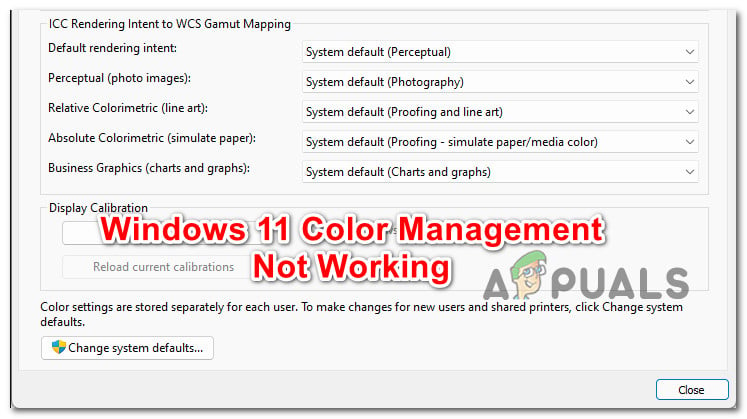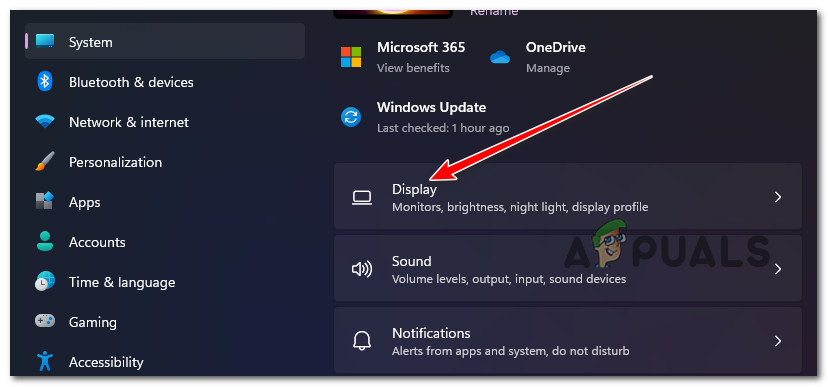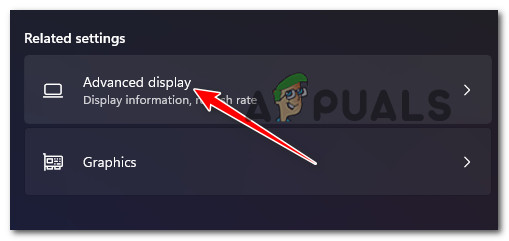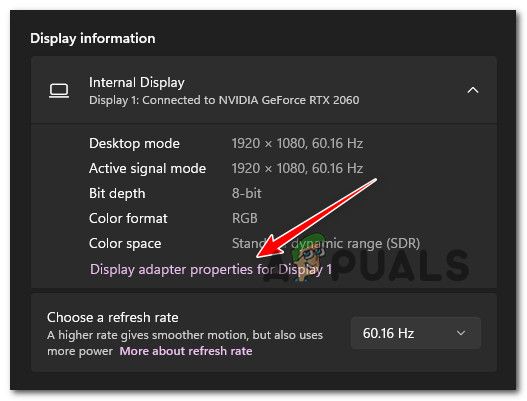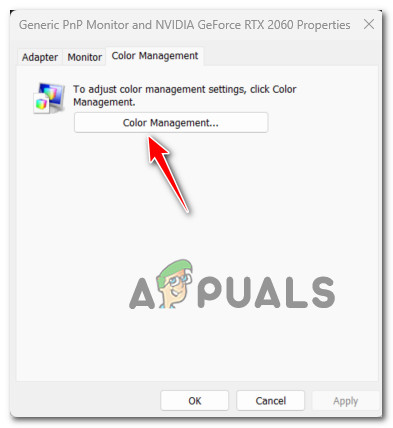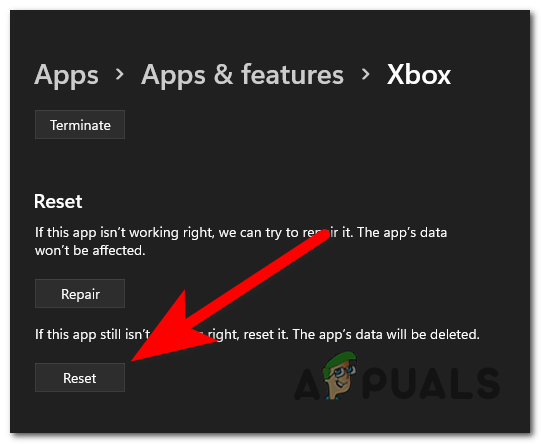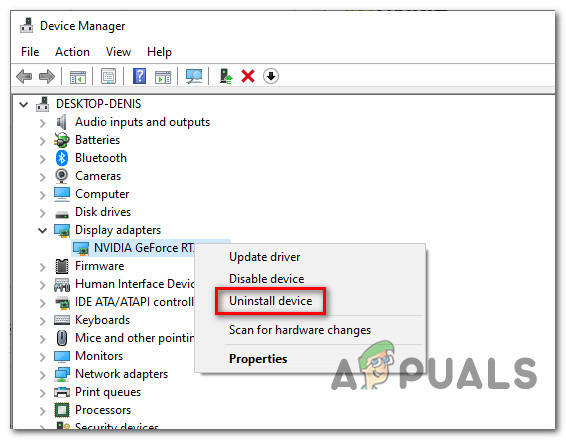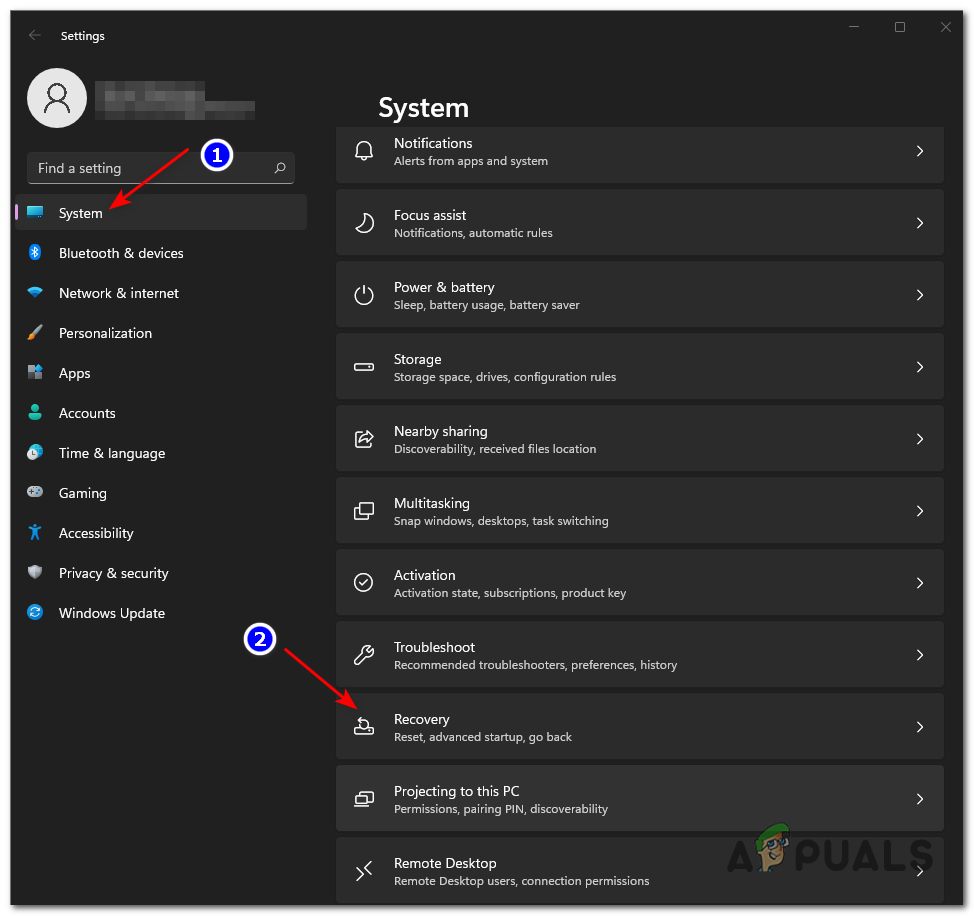Before we get to the troubleshooting tab, let’s go over every potential scenario that might be responsible for causing this particular error code: Now that we went over every potential cause of the issue, let’s get to the actual fixing part. Below you’ll find a collection of verified fixes that other affected users have successfully used to get to the bottom of this issue and fix it.
1. Update the Windows 11 build
According to many people who have experienced issues with the color management profile, the problem may frequently be resolved fully by applying all pending Windows updates. Note: This technique is based on the assumption that you didn’t already install all the pending Windows Updates that Microsoft has already released in order to eradicate the issue affecting the color management profile. Since Microsoft has made a handful of updates targeted at reducing this sort of problem, this is the potential repair you should start with. To resolve this issue, go to the Windows Update component and make sure you’re running the most recent build for your Windows 11 version. To do this, follow the instructions below to use Windows Update to install the most recent available Windows 11 build: If the same kind of issue is still occurring, move down to the next potential fix below.
2. Reinstall the color profile
If the first method was not effective, you should start investigating a scenario in which the issue is caused by an inconsistency impacting the color profile component. This is highly dependent on your OEM. This sort of problem, according to impacted consumers, is currently limited to a small handful of OEMs. To remedy this issue, go to the OEM website and get the color profile, then apply it from the Display menu. The color profile for your display can usually be downloaded from the manufacturer’s website. You may find it by looking for it on the OEM website’s help area using the monitor’s model number. Here’s how to use the color profile after you’ve got it: If the problem is still not fixed, move down to the next method below.
3. Reset the app unable to retrieve the color profile
Keep in mind that the fault may not always lie with your operating system’s color profile management, but with the software that tries to use it. If you’re having this difficulty with particular apps, try resetting the problematic app to force it to get the color profile. If the issue is with a specific app, you may want to try resetting it. There are two options for accomplishing this. The first option is to reinstall the software or hunt for a color profile that is currently accessible. Only applications that support it are eligible for the latter. Here’s what you need to do in order to retrieve the color profile for a particular app: If the same kind of issue is still occurring, move down to the next method below.
4. Update or Reinstall the GPU Software
Another reason you can find inconsistencies in how the Color profile is maintained is if your graphics card driver is old or partially incompatible. Start by upgrading or reinstalling the GPU software if you haven’t previously done so before attempting to utilize the color profile component again. This problem might be caused by a recent driver update or a missing update that clashes with Windows. If this happened shortly after a Driver update, a driver replacement is an excellent idea. Follow the instructions below for specific instructions on reinstalling your GPU drivers regardless if you’re using an integrated GPU from Intel or a dedicated GPU from Nvidia or AMD: If the problem is still not resolved, move down to the next potential fix below.
5. Clean install or repair install
If none of the above options have helped you tackle the problem, you may be dealing with a systemic problem that you won’t be able to resolve normally. In this instance, the only option is to reset every Windows component to correct the system file corruption that is affecting the color management component. When it comes to updating your Windows version to the most recent version, you have two options:
Repair install – When it comes to cleaning any form of corruption on Windows 10, the repair install option is the best option. You’ll need suitable installation CDs, but the main benefit is that you’ll be able to keep all of the games, apps, and personal material that are now stored on the OS disk.Clean install – This is the simplest of the procedures because you don’t need to use any installation discs (you can initiate this procedure directly from the GUI menu). The primary downside is that you will lose everything of your personal media, games, apps, and user preferences unless you back up your C: disk in beforehand.
If the problem persists after you have cleaned or repaired Windows, proceed to the next procedure below.
6. Revert back to Windows 10 (if applicable)
Regardless of the workarounds you use, certain older programs will struggle to acquire the Color Management Profile. If a program used to operate on Windows 10 but no longer does on Windows 11, the only option is to convert to an older operating system (if you still can). If you’re still inside the 10-day grace period, Microsoft has made it incredibly simple to switch back to Windows 10. If you’ve had enough of Windows 11 and want to go back to Windows 10, follow the steps below to roll back to Windows 10 through the Recovery menu:
Fix: MSI True Color not WorkingCan’t Change Color of Taskbar on Windows 11? Here’s How to Fix It[SOLVED] Can’t Change Taskbar Color in Windows 10Inverting Colors on Windows 10 using Color Filters and Magnifying App
